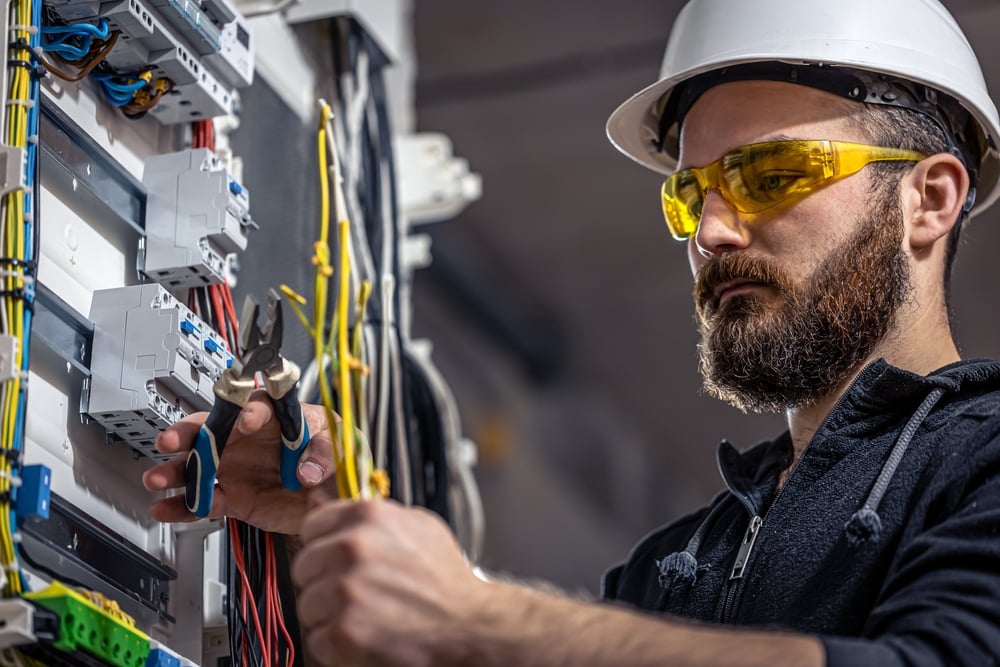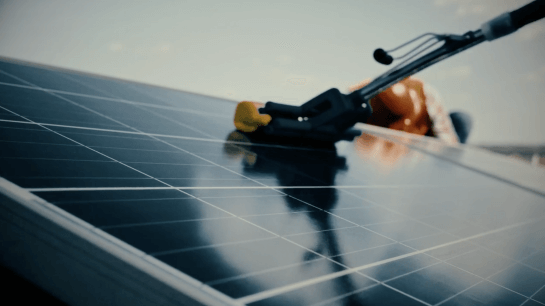SOLAR OPTIMIZATION & MAINTENANCE
PERFORM AT THE HIGHEST LEVEL
LET US HELP MANAGE & MAINTAIN
Ensure your system is producing at 100% and keep your system running efficiently with O&M.
Is your solar system working properly?
Businesses are realizing that keeping their solar system regularly inspected and well maintained is vital to their bottom line.
24/7
system monitoring
48
hour emergency response
27%
lower average repair cost

WHY O&M?
PROTECT YOUR ENERGY ASSETS
With your maintenance plan, you can be assured that your investment continues to produce at 100%. This consistency ensures a positive return on investment. 1.5 - 3x ROI on your preventative maintenance investment.
MAINTAIN ENERGY SAVINGS
It is crucial to keep an energy-efficient solar system maintained after installation and to optimize it to offer maximum savings.
There are many things we can do to assure your system operates at the highest efficiency, such as regular cleaning, performance monitoring, annual checkups and maintenance.
FOCUS ON YOUR BUSINESS
Managing your energy systems is not
your primary function when you’re an
owner or manager.
You can trust us to take care of your
energy systems, saving you money and
time and allowing you more time to
grow and manage your business.
CONSIDER US YOUR LONG-TERM ENERGY PARTNERS.
- Corrective And Scheduled Maintenance
- Regular Site Visits
- Condition-Based Maintenance
- Automated Cleaning Solutions
- Performance Optimization
- Remote Diagnostics & Power Operation
- 24/7 System Monitoring
- 48-Hour Emergency Response
REPAIR AND SERVICE YOUR SOLAR ASSET
Give your solar system the attention it needs to operate efficiently.
Many older projects simply need a little tune-up or minimal repairs to ensure their system continues to operate at 100%.
Your system can be brought back to life with the help of our experienced team.
SOLAR TRIAGE
Your system will be thoroughly assessed for performance and issues that may be affecting production. Service technicians will evaluate all parts of the solar array for function and operation.
At conclusion, you will be provided multiple options, (depending upon your specific situation and budget) to get your system up and running at 100%.
SOLAR SYSTEM REPAIR
The goal is to have your system performing almost as good as new (panel degradation notwithstanding).
Even if some components are out of warranty (or worse, unable to find) Transform has an extensive network of suppliers along with industry expertise to get you back on track.
You can opt for a long-term O&M plan upon repair, at your discretion.
COMPREHENSIVE ENERGY ANALYSIS
Once back to its “old self” you are now ready for a full analysis of your solar production in conjunction with your current energy needs.
Ensure you are staying on top of the latest incentives and technologies in regard to your energy production.
REPAIRS & SERVICES:
- Corrective And Scheduled Maintenance
- Regular Site Visits
- Condition-Based Maintenance
- Automated Cleaning Solutions
- Performance Optimization
- Remote Diagnostics & Power Operation
- 24/7 System Monitoring
AUTOMATED CLEANING SOLUTIONS:
ENSURE YOUR SOLAR PANELS ARE KEPT CLEAN, ALL THE TIME,
WITH AN AUTOMATED CLEANING SOLUTION
AUTOMATED SOLAR PANEL CLEANING
Ensure your solar panels are kept clean, all the time, with an automated cleaning solution. Your existing solar system could be producing up to 30% more energy.
The system uses three separate water filter technologies to ensure no solids ever reach your panels. This helps to prevent harmful water scaling and corrosion!
AUTOMATIC NIGHTLY CLEANING
The system cleans regularly, at night, keeping the panels consistently clean preventing dirt and limescale buildup – thus increasing energy production by upwards of 30%.
SAFE & EFFICIENT
The system distributes water through an automated, reliable system – reducing labor, safety hazards and damage to rooftops. No chemicals or abrasive brushes are used. Utilizing a “self-maintenance” protocol the system helps you achieve the lowest operating costs possible.
WARRANTY
COMPLIANT
The system cleans the panels at night to avoid thermal stress to the module glass. By keeping the modules clean on a consistent basis and not using abrasive brushes or solvents you can ensure warranty compliance with your module manufacturer.
CONSIDER US YOUR LONG-TERM ENERGY PARTNERS.
- Increase Production
- Protects Solar Panel Warranty
- Safer Cleaning
- Remotely Controlled
- Robust Technology
- Proven Technology
Protect your energy investment from limescale build-up. Automatically clean your solar system from your phone. Increase Panel Production up to 30%.
Transform Energy is a licensed installer of a unique proprietary automated solar panel cleaning technology using advanced water engineering. The purification technology treats the water down to negligible and safe levels of limescale before the automated system washes the modules. It is the most cost-efficient solution to panel soiling on the market.



